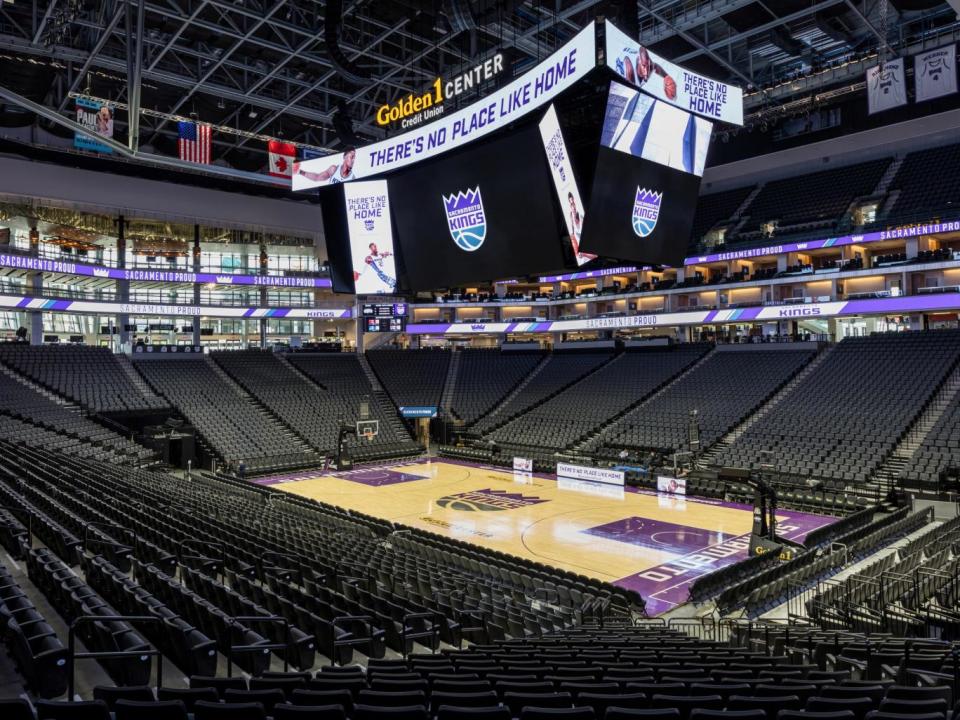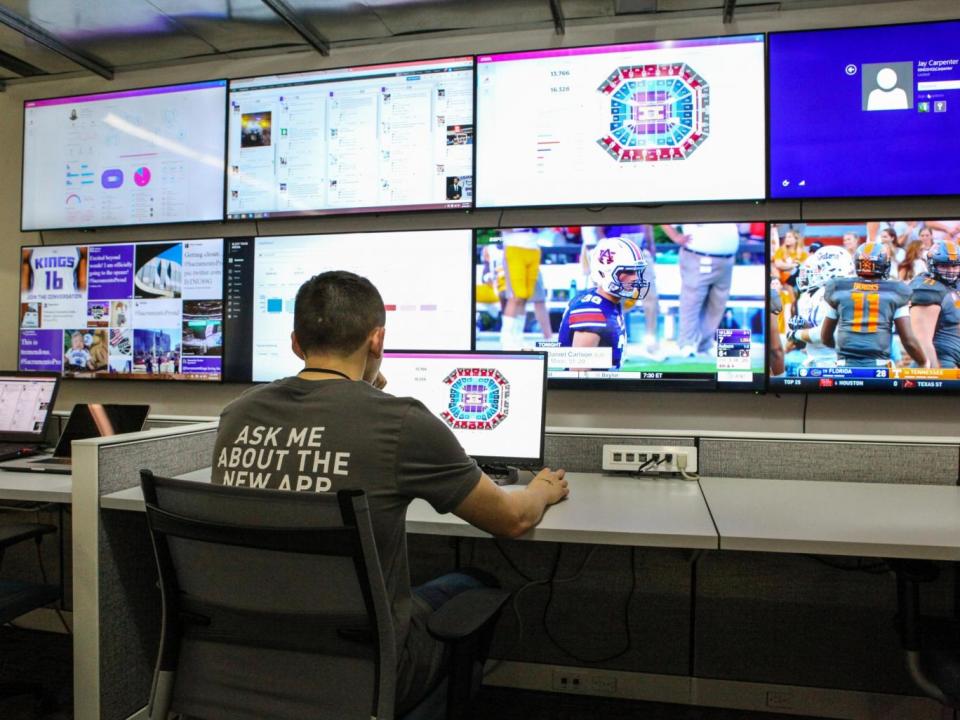Welcome to the sports arena of the future: A look behind the scenes at Sacramento's Golden 1 Center

When it comes to stadiums, Tottenham’s swanky new ground, scheduled to be completed in 2018, looks set to be the talk of the town. Interchangeable pitches, a ‘Sky Walk’, even a micro brewery. Impressive stuff, for sure.
But one stadium, 5,300 miles west of London and an 11-hour flight away, already stands head and shoulders above the crowd. Home to the NBA’s Sacramento Kings, Golden 1 Center has brought a whole new meaning to ‘game day’.
However, standing before the 17,500-seat arena, located a stone’s throw away from the city’s old quarters (providing a neat contrast between Sacramento’s past and its bright future), it’s easy to wonder what all the fuss is about. With its silver-plated exterior and squat, shell-like frame, Golden 1 Center is relatively modest in appearance.
And yet to paraphrase a much-used adage, ‘never judge a sporting arena by its cover’. Golden 1 may lack the scale of LA’s Staples Centre or the futuristic, sci-fi design of Minnesota Viking’s US Bank Stadium, but it’s the arena’s unseen idiosyncrasies which set it apart.
It may not be obvious at first glance, but on an environmental, social, cultural and digital level, the Golden 1 Center is a stadium that is very much woven into the world in which it inhabits. Indeed, the stadium is the first of its kind to be run completely on solar power, 15 per cent of which is generated by the ground itself, while a displacement ventilation system controls the internal temperature through vents at the seat level, instead of circulating high-volume forced air from the ceiling.

It’s little wonder, then, that the stadium has been awarded the LEED Gold certification - the highest mark of sustainability a building can achieve.
In terms of connectivity, Golden 1 Center sets a new precedent. Twin 100-gigabit-per-second pipelines deliver super-fast bandwidth to the ground – similar to what a city with roughly 70,000 inhabitants would receive. To put that into numbers, Golden 1’s connectivity allows up to 500,000 snapchats to be sent per second. But such digital oomph happens to be good for a lot more than just Snapchat. Everything and everyone is seemingly connected.
From the smart turnstiles to the lines outside the bathrooms to the stadium’s 4K, 84-foot screen, the stadium is buzzing with data to ensure fans make the most of their experience. “It's about removing friction,” says Chris Granger, president of the Kings.

The Kings’ app helps add to this. Fans can order food from their seats, which is then delivered by staff, with one simple touch of their phone while replays of the game can be watched over and over again. The app also enables staff to know when certain individuals enter the stadium so they can be immediately catered for. Altogether, these features have created a future-proof and seamless digital experience that puts Golden 1 light years ahead of its rivals.
But while the stadium embraces and makes full use of the digital-defined, info-driven spirit of today, Golden Center 1 remains equally entrenched within the city. “The story of the arena is uniquely Sacramento,” Granger explains. “The food to art to tech, it speaks to Sacramento.”
That’s why, then, 90 per cent of all food served to fans is sourced from within 150 miles of the ground. “It should feel like a farmers market,” Granger adds, “not a concession.”

The Kings have also committed to turning food scraps into fertiliser that will go back to the farms that provided the produce in the first place, creating a local and sustainable food cycle. The push to propagate a communal spirit is evident in the stadium's design too. The north end is made up of 60-foot-tall glass doors that fold up to open the arena to the surrounding plaza - the first of its kind.
The aim, Granger explains, is to turn the area into a vibrant hub where anyone can come to enjoy the buzz surrounding the stadium on a game day.
The arena is more than just a sporting and social hotspot, however. A once-in-a-generation catalyst, Golden 1 Center has injected a much-needed shot in the arm to the city’s local economy. Through the stadium itself and complimenting construction projects - from a 250-room boutique hotel to the brand new restaurants and retail shops that make up the 1.5m square foot site - the local economy has subsequently flourished.
Downtown employment has grown by 27,607 jobs in the past 24 months of construction and property values have reached $1.24bn. Thanks to the Kings’ new home, Sacramento is fast becoming a vibrant urban hub that is beginning to attract investors and, in doing so, shake off its reputation as California’s forgotten city.
In light of all of this, it’s not surprising that the Kings have been approached by clubs from all over the world, including a number of Premier League teams, who are keen to learn from the stadium. In fusing the past with the present, old with the new, the local with the global, Golden 1 Center is redefining the fan experience for the best.
“This is a building that was built by Sacaramentans,” Granger concludes. “You come here and you know you're in Sacramento and that is not the case with many buildings and venues across not just the NBA but the world.”
Fans can watch the iconic NCAA March Madness® Tournament, on the channels of BT Sport (BT Sport 1, BT Sport 2, ESPN // BT Sport). Throughout the season, the BT Sport channels bring fans in the UK & Ireland more than 300 NCAA basketball games.

 Yahoo News
Yahoo News 